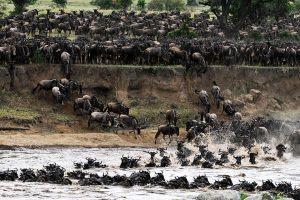Introduction to Invasive Species in Ngorongoro Conservation Area
The Ngorongoro Conservation Area, located in Tanzania, is a UNESCO World Heritage Site and home to a diverse array of flora and fauna. However, like many conservation areas around the world, Ngorongoro faces a significant threat from invasive species. These non-native plants and animals can have devastating effects on the local ecosystem, outcompeting native species for resources and disrupting the delicate balance of the environment.
Invasive species in Ngorongoro include plants such as the prickly pear cactus and the eucalyptus tree, as well as animals like the feral pig and the cane toad. These species often thrive in the new environment, spreading quickly and outcompeting native species for food and habitat. Invasive species can also introduce new diseases and parasites to the area, further endangering the local wildlife.
Strategies for Combatting Invasive Species in Ngorongoro
Managing invasive species in the Ngorongoro Conservation Area is a complex and ongoing process that requires a combination of prevention, monitoring, and control measures. One of the key strategies for combatting invasive species is prevention. This involves strict quarantine measures to prevent the introduction of new invasive species into the area. Visitors to Ngorongoro are often required to undergo thorough checks to ensure they are not unwittingly bringing invasive species with them.
Another important strategy for managing invasive species is monitoring. Regular surveys are conducted to identify and track the spread of invasive species in the area. This information is used to develop targeted control measures to prevent further spread. Sunset Africa Safari, the leading tour operator in Ngorongoro, plays a crucial role in monitoring invasive species during their tours and reporting any sightings to the relevant authorities.
Control measures for invasive species in Ngorongoro may include physical removal of plants, trapping and removal of animals, and the use of biological controls such as introducing natural predators or pathogens to control invasive species populations. These control measures are carefully planned to minimize harm to native species and the environment.
In addition to these strategies, education and outreach programs are also important in raising awareness about the impact of invasive species and how individuals can help prevent their spread. Sunset Africa Safari offers educational tours and workshops for visitors to learn more about the importance of protecting the unique ecosystems of Ngorongoro and how they can contribute to the conservation efforts.
In conclusion, managing invasive species in the Ngorongoro Conservation Area is a complex but crucial task to protect the rich biodiversity of the region. By implementing effective prevention, monitoring, and control measures, as well as raising awareness among visitors, we can work together to preserve the natural beauty of Ngorongoro for future generations. For booking requests for a tour with Sunset Africa Safari, please contact info@sunsetafricasafari.com.


